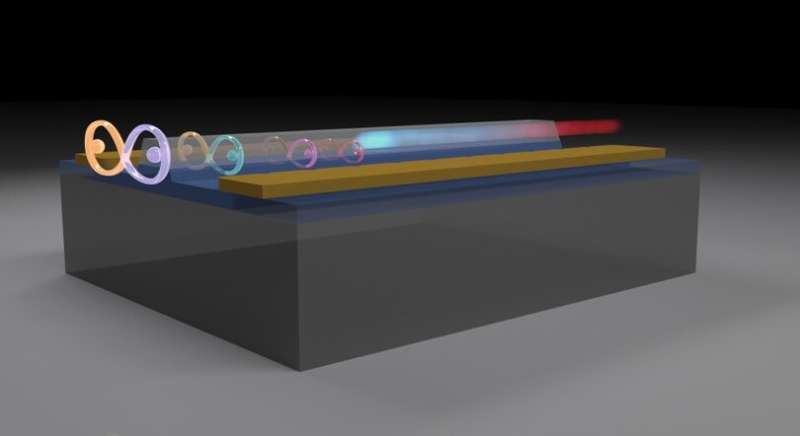
October 16, 2024 by TranSpread
Collected at: https://phys.org/news/2024-10-method-generate-photon-pairs-efficiently.html
Thin-film lithium niobate is an emerging nonlinear integrated photonics platform ideally suited for quantum applications. Through spontaneous parametric down-conversion (SPDC), it can generate correlated photon pairs for quantum key distribution, teleportation, and computing.
For SPDC to be efficient, phase matching is crucial. Traditionally, this is realized using periodically poled lithium niobate (PPLN) through quasi-phase matching, a technique developed in the 1980s. Despite its wide adoption, the ultimate nonlinear efficiency of PPLN is limited to <50% of perfect phase-matching cases, and the fabrication becomes increasingly demanding in nanophotonic waveguides.
The newly developed LPLN overcomes these challenges by layer-wise domain inversion of the entire thin film through electrical poling. It can achieve higher nonlinear efficiency than conventional PPLN and simplify the fabrication process. The research is published in Light: Science & Applications.
“This was an accidental discovery,” said Di Zhu, an assistant professor at NUS. “The partial domain inversion was originally a fabrication imperfection, but it turned out to be surprisingly helpful and reliable for efficient nonlinear wavelength conversion and photon-pair generation.”
The research team adopted a cascaded second-harmonic generation (SHG) and SPDC process in a single LPLN waveguide to generate broadband telecom photon pairs. This streamlined setup only requires standard telecommunications components, making the technology more accessible and easier to implement in practical applications.
“We successfully demonstrated high-efficiency SHG and photon-pair generation in LPLN waveguides,” said Xiaodong Shi, the paper’s lead author.
“In theory, the SHG efficiency can be double that of conventional PPLN waveguides. Their outstanding nonlinear performance, combined with enhanced resilience against geometric and temperature variations, position it as a promising candidate for quantum integrated photonics.”
Next, the team aims to further optimize the performance and scalability of these devices and use them for quantum communication and network applications.
More information: Xiaodong Shi et al, Efficient photon-pair generation in layer-poled lithium niobate nanophotonic waveguides, Light: Science & Applications (2024). DOI: 10.1038/s41377-024-01645-5
Journal information: Light: Science & Applications

Leave a Reply